Climate Change is Real; Read These Books
Remember, just because you had to put on a coat before you left the house today, doesn’t mean that we should start firing our climate-change workers in the Department of Energy. Need some more proof that China isn’t playing a big joke on you? Read one of these six books, featured in our Winter 2017 issue.
Environmentalism of the Rich

Peter Dauvergne
MIT Press
Hardcover $26.95 (232pp)
978-0-262-03495-1
Presenting an economic analysis of environmentalism, this book argues not only that environmental activism by celebrities and large companies is largely ineffectual, but that global capitalism itself is the most significant driver of climate change.
By relying on historical examples of capitalism impacting the environment, Environmentalism of the Rich attempts to connect the devastation of nature to a factor that more influencers will care about. These influencers, who are individuals or organizations with enough money to actually make a difference in the fight against environmental pollution, are found here to have basically been duped into partnerships with companies like Coca-Cola, to participate in efforts that amount to feel-good exercises. While recognizing that well-applied wealth might yet make a positive difference, the author ultimately encourages a more general “spirit of outrage” as the means of change. Though this makes for a somewhat abstract conclusion, the points that the book makes are solid, and its arguments in favor of change of global production systems are convincing.
Though it occasionally wanders from its main point, usually to become a little too wrapped up in its examples, the book consistently exhibits good analyses of the effect of capitalism on localized environments. Its microcosms of lands and situations ruined by profit-driven systems range from early examples of imperialism on Pacific islands to the persistence of lead in gas as a result of industry manipulation of research data.
Though the book is academic in its style, a broad range of readers will find it accessible. It is clearly written and easy to understand, and its many examples are both engaging and informative. An excellent pick for anyone with an interest in economics.
ANNA CALL (November 28, 2016)
Protecting the Planet
Environmental Champions from Conservation to Climate Change
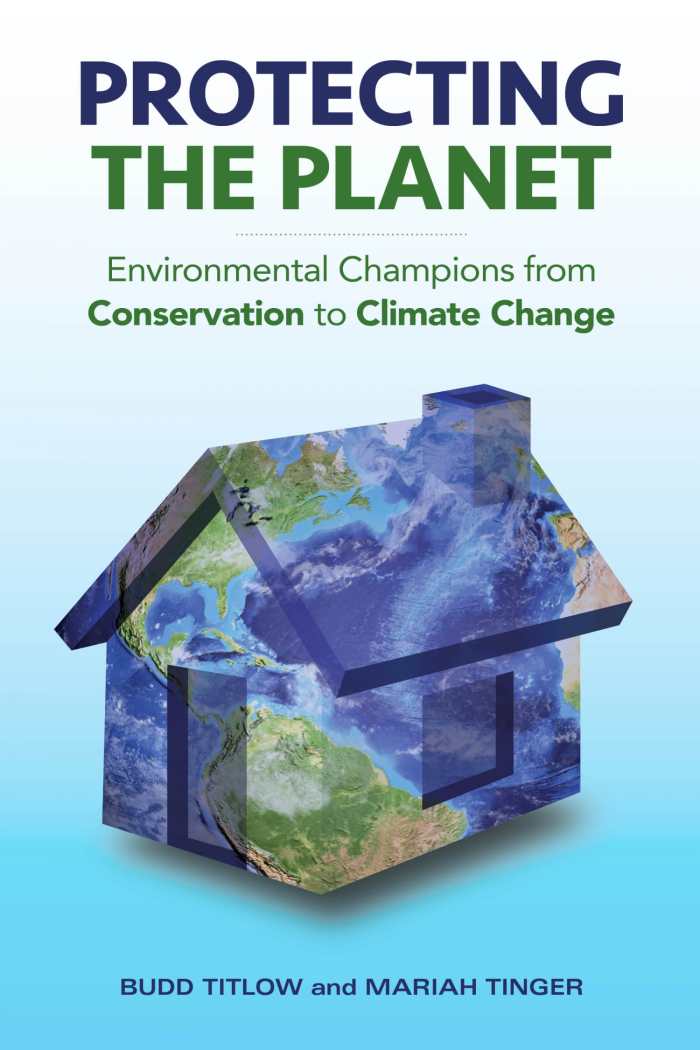
Mariah Tinger
Budd Titlow
Prometheus Books
Hardcover $26.00 (550pp)
978-1-63388-225-6
Buy: Local Bookstore (Bookshop)
Covering the science and history of climate change, Protecting the Planet represents an ambitious attempt to cover the entire context of climate change, from origins to possible solutions. Unfortunately, it is only partially successful.
There are four main thematic parts to this hefty book. The first and shortest part explains the science of climate change and rebukes deniers. The second, much longer section provides a relatively quick overview of the history of environmental protection and preservation. Third, the book details short bios of modern climate activists, including ecologists and celebrities. Finally, the book presents potential large- and small-scale solutions to climate change.
By providing a historical context for climate change, Protecting the Planet makes an ambitious go at providing perspective to a problem too often seen as modern. Its focus on climate “heroes” humanizes a struggle usually represented by legislation and corporate action. However, many early historical events are given too little attention, and even modern ones lack in-depth analysis. When the book transitions to activist biographies, it becomes a dizzying cascade of information. The book’s final section, “Part Five: Finding Solutions,” represents a good, quick manual for effective grassroots action against climate change, but would function more effectively if it stood alone as its own book.
The writing here has a lot of personality and is consistently interesting. However, charged commentary on political actions, such as the Iraq war and Reaganomics, limit the likelihood that it will draw the unconverted across the aisle.
Protecting the Planet is a quirky contribution to an area of climate-change literature that doesn’t tend to get a lot of attention. Its comprehensive timeline of climate-change history will be both interesting and useful to educators.
ANNA CALL (November 28, 2016)
The Atlas of Water
Mapping the World’s Most Critical Resource
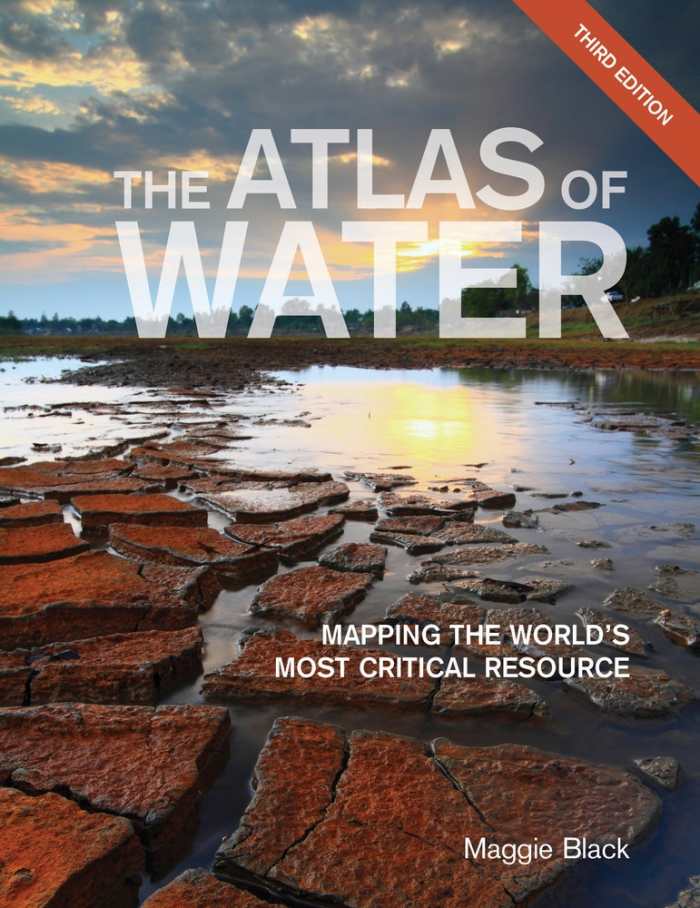
Maggie Black
University of California Press
Softcover $24.95 (128pp)
978-0-520-29203-1
Buy: Local Bookstore (Bookshop)
The 3rd edition of this comprehensive atlas provides a thorough snapshot of water usage as it stands today.
Environmentalists are in the process of becoming more aware of the economic and social factors involved in water use, from manufacturing to religious purposes. This straightforward collection of maps and data represents an excellent starting resource. While environmentalists in particular will appreciate the importance of the dizzying array of facts presented here, many international business and political sectors could find it useful as well. The many disagreements caused by dams and river redirections, for example, several of which feature here, may be useful to municipalities concerned about fair resource allocation.
The atlas lives up to its name by focusing primarily on maps of the globe. Clear color coding and good legends are key to the book’s success in delivering complex data as understandably as possible. Succinct descriptions of water-trouble hot spots help to contextualize the information that this book imparts.
The fact that this is the third edition of The Atlas of Water should come as no surprise; the book is extremely topical, referencing geopolitical events such as the rise of ISIL and flooding in Pakistan. The maps will continue to be useful for several years, outlining major water events and situations that will loom large in memory for some time, including the melting of the Himalayas and the California drought.
The combined visual appeal and depth of this book make it a rarity in a field too often crowded with passionate verbal calls to action and equally passionate verbal rebuttals. The Atlas of Water does not try to present solutions or demand action, nor does it question or defend the validity of climate change. It assumes a set of facts and presents the situation as it stands. Regardless of its audience, it will inspire thought.
ANNA CALL (November 28, 2016)
The New Ecology
Rethinking a Science for the Anthropocene
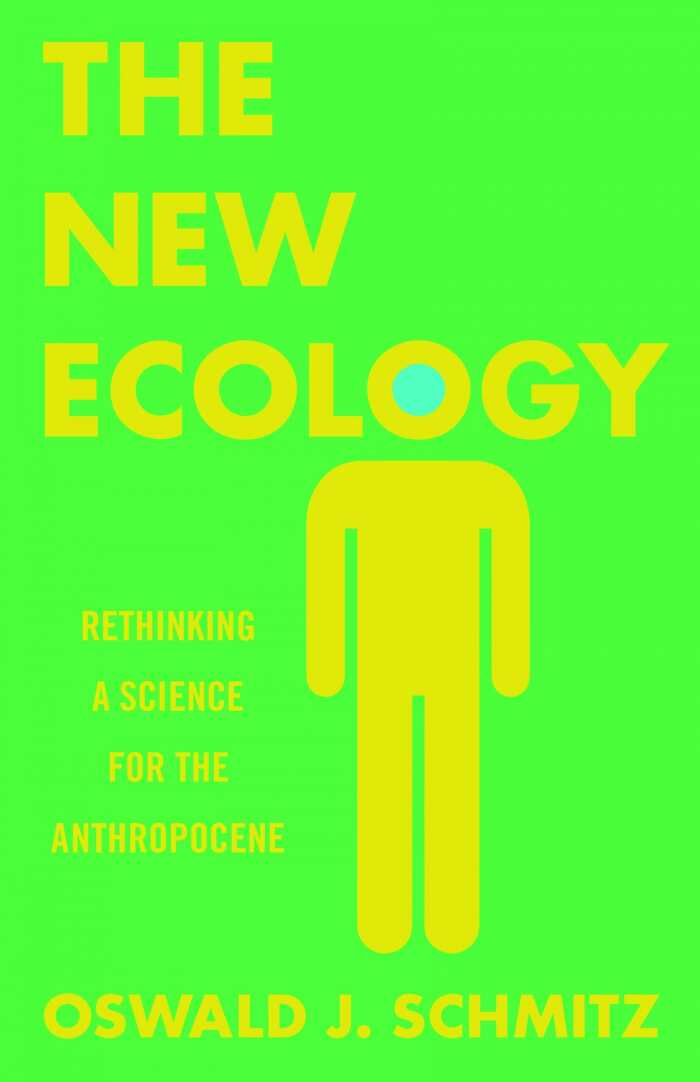
Oswald J. Schmitz
Princeton University Press
Hardcover $35.00 (256pp)
978-0-691-16056-6
Buy: Local Bookstore (Bookshop)
Featuring novel ideas communicated clearly, this book is likely to have broad appeal.
Human impact on the environment has become a certainty. However, the idea that humans are a force separate from the environment may be a harmful one. This book proposes that humans integrate themselves and their activity into a natural ecological niche, striving to control their impact on the natural environment by understanding and engineering their place in it.
Unlike many of its contemporaries, The New Ecology does not call for absolute change, such as the cessation of mining or carbon fuel use by a certain date. Instead, it encourages a holistic approach to ecology, as well as an acceptance that, yes, humans are indeed going to continue changing the world around them. Instead of opting for a zero-impact approach, this book calls for active stewardship and understanding of humans as part of an ecosystem—a very influential part. It also acknowledges economic and social realities that many activists simply decry outright.
The New Ecology is persuasive in its argument that conscientious stewardship is more productive than an attempt to separate humans from the environment completely. However, though the author states repeatedly and plainly that harmful human activity must be checked, there is some danger of the message of this book being misinterpreted as license to alter the environment. Part of this is because the book takes a while to establish its central point. Reading past the first few chapters proves rewarding, however. Conversational in tone, non-ecologists will comprehend the book easily, and ecologists will be interested in the fresh concepts.
ANNA CALL (November 28, 2016)
A Global Warming Primer
Answering Your Questions About The Science, The Consequences, and The Solutions
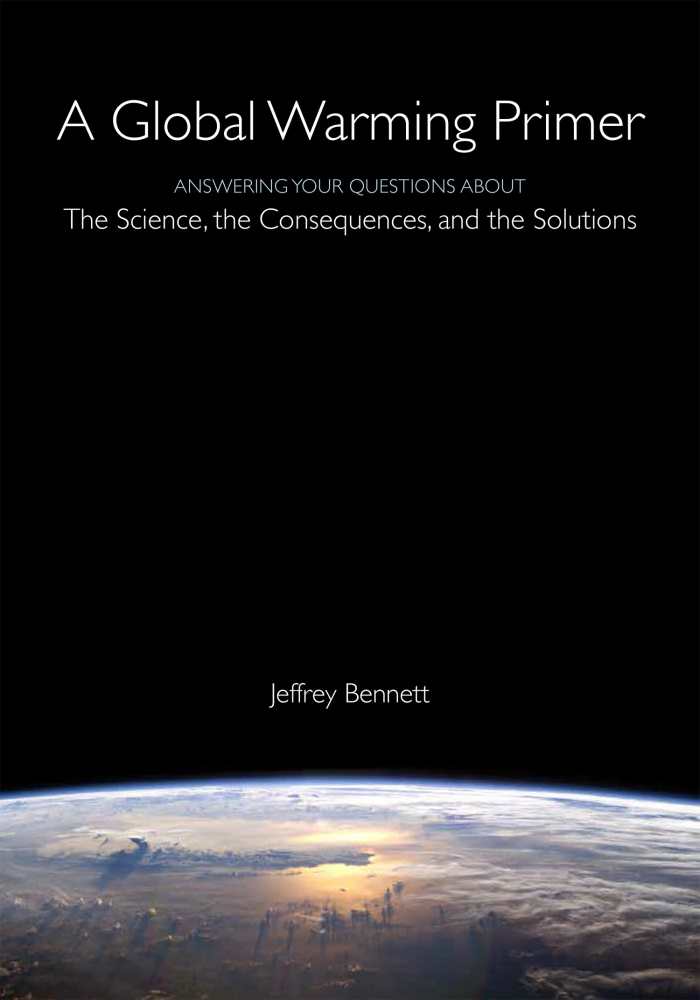
Jeffrey Bennett
Big Kid Science
Softcover $15.00 (128pp)
978-1-937548-78-0
Featuring clear, well-written, and concise arguments, this book is ideal for both climate-change believers and skeptics.
There are many explanations available of how global warming works, but few are as clear, comprehensive, and visually descriptive as in this book. Modest in length, A Global Warming Primer lays out the facts surrounding human-caused climate change in a straightforward and complete manner, explaining both why climate change is happening and what will happen if it is allowed to continue. The book also addresses common arguments against the existence of climate change and debunks them in an apolitical and fact-based manner. The book is comprehensive enough to function as a stand-alone resource. Its coverage of the science behind human-caused climate change is written in plain English, clear enough to be accessible even to young teenagers. Full-color graphs and color coding of sections assist greatly in the book’s accessibility and enhance its ability to serve as a reference.
Though reminiscent of a textbook in the depth of its research and intense focus, A Global Warming Primer is a painless read-through that neither talks down to its audience nor deviates from its purpose. Even while the status of climate change is in constant flux, the science upon which the book is based should remain relevant for many years. Expect this book to function as a useful resource during that time.
Adults of all political and ideological backgrounds will appreciate the book’s mature take on the arguments against climate change. By addressing common challenges to the concept of global warming in a respectful and enlightening manner, it expands its audience far outside the range of global-warming believers. At no point does it resort to name calling or political rhetoric. Even considering the book’s strong all-around showing, its no-nonsense approach is by far its greatest strength. Consider this book an ideal conversation starter and a good gift for skeptics.
ANNA CALL (November 28, 2016)
Biting the Hands that Feed Us
How Fewer, Smarter Laws Would Make Our Food System More Sustainable
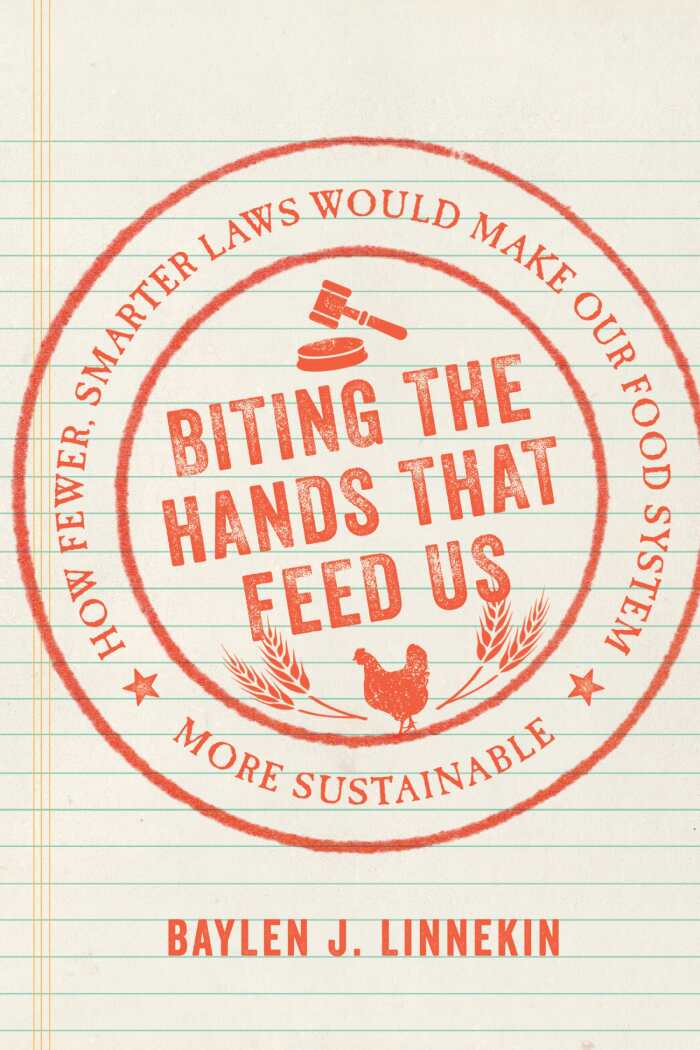
Baylen Linnekin
Island Press
Hardcover $30.00 (224pp)
978-1-61091-675-2
Buy: Local Bookstore (Bookshop)
Promoting a libertarian take on the regulation of organic food, this engaging book presents a fresh perspective on a popular topic.
According to Biting the Hands that Feed Us, food production regulation is an unfortunate fact of life for farmers and restaurateurs. Rules about saleable food, proper places to slaughter cattle, and even the legality of backyard gardens combine to generate a food system that is wasteful and cumbersome. The book calls for loosening of food production regulation, freeing this portion of the economy to thrive more sustainably.
While the book covers many areas of food production and use, its focus on organic and local food may be the most significant. With example after example, Biting effectively makes the case that organic farmers should be allowed to do what they do best, with less regulation and oversight.
While the book is unapologetically libertarian, it concedes that some food safety regulation is important, though the implication is that large operations probably need regulation more than small farmers. The author does an excellent job of highlighting Kafkaesque rules involving legal definitions of the word “fruit” and the correct way of aging cheese, and the plights of the ordinary people recounted here strike a key balance between emotional and fact-based response. Part of this is thanks to the book’s engaging, easy-to-read style. Its parable-type structure, including citations located in footnotes for immediate reference, lends itself well to both quick reading and further research.
Regardless of their political affiliation, many audiences will find this book fascinating. Foodies, gardeners, and active locavores should particularly enjoy it, but policymakers should also pay attention to this strong and interesting perspective.
ANNA CALL (November 28, 2016)
Anna Call

